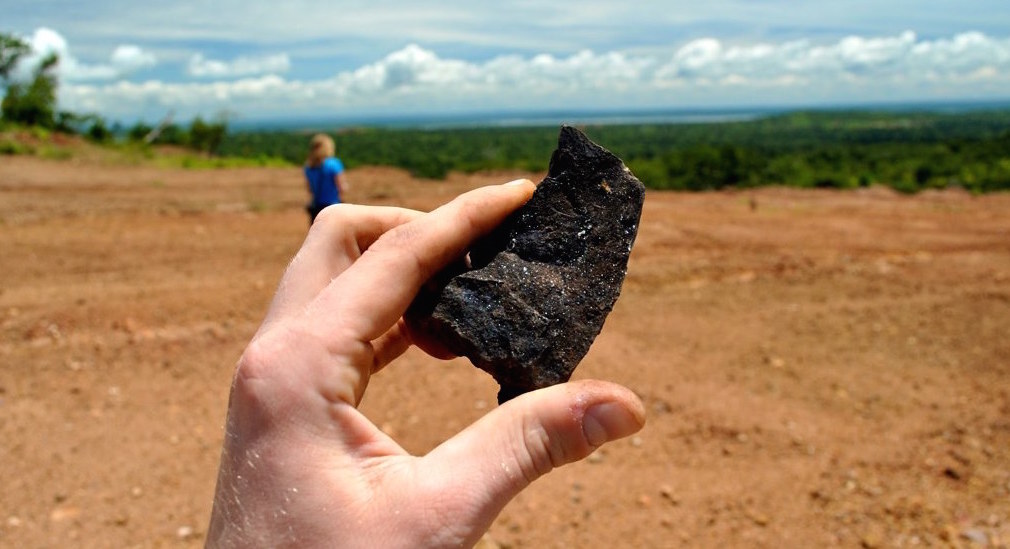In January 2019, Gordon Edwards, president of the Canadian Coalition for Nuclear Responsibility, warned that the Trudeau government has a “desire to build small modular nuclear reactors [SMRs] all over Canada, especially in the North, to support the accelerated exploitation of natural resources.” Edwards included an excerpt from Nuclear Energy Insider, published January 16, 2019, which stated: “Canada’s large mining sector is seen as a key early market for SMR plants as operators look to reduce carbon emissions and costs.”
That “early market” for small modular reactors has been cleverly targeted by a key lobby group. As I wrote for Watershed Sentinel, Bill Gates and 28 other billionaires and “high-net-worth” individuals launched the Breakthrough Energy Coalition at the 2015 Paris climate talks to lobby for small nuclear reactor development as “clean technology” in dozens of countries, including Canada.
This billionaires’ nuclear club has been working closely for years with Natural Resources Canada in the push for small modular reactors, especially for use in off-grid mining.
Search for rare-earth metals
In 2018, Gates and his Breakthrough buddies backed a California-based mining industry start-up called KoBold Metals. KoBold’s aim is to map the Earth’s crust to find rare-earth metals and minerals such as cobalt.
KoBold uses what it calls “machine prospecting” — building a database from past geological reports about an area, old drilling results, and satellite imagery, and then feeding that data into number-crunching algorithms to hunt for signals indicating a concentration of the desired metal or mineral.
If KoBold’s analytics reveal a promising mineral location, the company stakes a claim to the area and will conduct preliminary drilling before bringing in a mining company or one of its Breakthrough Energy partners to finance a project.
Other financial backers of KoBold include U.S. venture capital firm Andressen Horowitz and (more recently) Norway’s Equinor (previously known as Statoil). Equinor is hoping the same technology and data analysis can be used to locate new sources of oil.
Currently, the race is on to find new sources of cobalt, and Canada has become a prime focus.
Countering China
The U.S. is attempting to counter China’s hold on supply chains for cobalt and other rare-earth minerals, which are non-renewable resources in short supply. The political tension is high, while the price for cobalt is projected to skyrocket over the next few years.
But many environmentalists in the U.S., and some Senate Democrats (including Kamala Harris before her election as vice-president), are strongly opposed to new mining measures that would “extend the mining industry’s toxic legacy for years to come.” They want increased recycling of rare-earth metals from iPhones, e-waste and other sources.
As a result, the U.S. has been avidly courting Canada, with Canada eagerly responding. In December 2020, Canada’s ambassador to the U.S., Kirsten Hillman, told Politico:
“We’re facing a situation where the production and the processing of a number of critical minerals is highly concentrated in just one or two countries. So our leaders came together and recognized that Canada-U.S. cooperation is going to be part of the solution to diversifying our supply chains.”
In March, Natural Resources Minister Seamus O’Regan told the Prospectors & Developers Association of Canada annual mining conference that “we will make strategic investments when [the private sector] bring them to us.”
Days later, Reuters reported that “Washington is increasingly viewing Canada as a kind of ’51st state’ for mineral supply purposes and plans to deepen financial and logistical partnerships with the country’s mining sector.” The Biden administration has also come out in favour of small modular reactors, calling them “game-changing technologies” that are “half the construction costs of today’s reactors.”
KoBold Metals has already staked large claims in three provinces: in northeastern Saskatchewan up to the province’s border with the Northwest Territories; in northern Quebec, where the company owns more than 800 square kilometres of exploration claims; and in Ontario, although KoBold has not identified the area claimed.
With Gates and his billionaires’ nuclear club backing KoBold, it’s likely that their off-grid mining projects would welcome government financing for small modular reactors.
When asked about the situation, Mining Watch Canada’s Jamie Kneen told me by email:
“On the one hand, the mining industry faces so much risk in the markets that it’s unlikely to add to that risk by jumping on an unproven technology [like SMRs]. On the other hand, the mining industry is used to leaving masses of toxic waste behind for others to deal with — and getting away with it — so it’d be a perfect fit.”
Three political parties are fully against small modular reactors: the NDP, the Bloc Québécois, and the Green Party — worth remembering if the federal budget causes an election.
This is part one of a two-part series on small modular reactors. Read part one here.
Freelance writer Joyce Nelson is the author of seven books. She can be reached via www.joycenelson.ca
Image credit: Fairphone/Flickr



